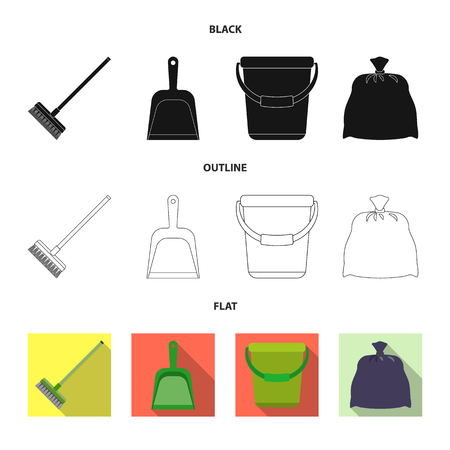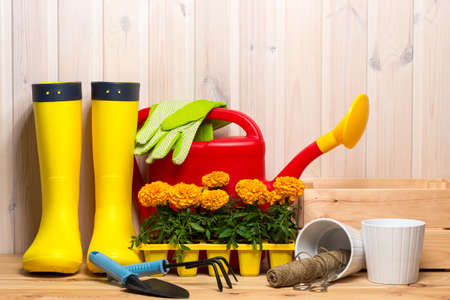Introduction to Allotment Sheds
In the heart of traditional British allotment gardening, the humble shed stands as more than just a shelter from the drizzle—it’s the cornerstone of every gardener’s plot. For generations, the allotment shed has been both a refuge and a workshop, a place to brew a cuppa, ponder over planting plans, and keep the tools of the trade safe and sound. Having the right set of tools in your shed isn’t just about convenience; it’s about working smarter, staying organised, and ensuring every task—from digging to pruning—is tackled with ease. In this article, we’ll explore which essential tools every allotment shed should house and share some time-honoured advice on how best to store them, so you can make the most of your cherished patch of earth.
2. Must-Have Tools for Every Shed
Every seasoned allotmenteer knows that having the right tools to hand is half the battle won when it comes to tending your plot. Over the years, I’ve learned that a well-stocked shed makes all the difference – not just for efficiency, but for enjoyment too. Here’s a practical list of essential tools and equipment no British allotment should be without:
| Tool | Purpose | Top Tip from Experience |
|---|---|---|
| Spade | Digging, edging beds, turning soil | Choose a sturdy, comfortable handle—your back will thank you later! |
| Fork | Aerating soil, lifting crops, breaking up clods | Ideal for heavy clay soils found in many British plots. |
| Trowel | Planting seedlings, weeding, small digging jobs | A stainless steel blade resists rust in our damp climate. |
| Hoe | Weeding between rows, cultivating topsoil | Keep it sharp—a blunt hoe is hard work. |
| Watering Can (with rose) | Gentle watering of young plants and seedlings | A removable rose gives flexibility for different tasks. |
| Secateurs (Pruners) | Trimming and shaping plants, harvesting fruit and veg | Invest in a good pair; cheap ones rarely last a season. |
| Rake | Leveling soil, gathering leaves and debris | A metal head lasts longer than plastic on stony ground. |
| Dibber or Dibble Stick | Making holes for seeds or bulbs | An old broom handle can do the job in a pinch. |
| Gloves (Sturdy pair) | Protecting hands from thorns, nettles, and grime | Keeps hands warm during early spring and late autumn jobs. |
| String Line & Stakes | Straight rows for planting or marking out beds | Cotton string is biodegradable and eco-friendly. |
| Kneeling Pad or Kneeler | Cushioning knees when planting or weeding low to the ground | Your joints will thank you as the seasons pass! |
This kit covers all bases for most everyday tasks on an allotment. Over time, you might add a wheelbarrow, netting hooks, or even a trusty old radio to keep you company. Remember: quality over quantity is key. Well-made tools not only last longer but make the daily graft more enjoyable—something any old hand on the plot will tell you.

3. Seasonal Tools and Their Uses
Every experienced allotment holder knows that having the right tool at the right time of year can make all the difference between a thriving plot and one thats struggling along. The British climate, with its ever-changing moods, means our toolkit must adapt as the seasons roll by. In spring, for example, a good quality hoe is absolutely essential. As soon as the soil begins to warm, weeds pop up overnight, and nothing beats a sturdy hoe for keeping them in check without too much backache. Come summer, watering cans or hoses become your best friends, especially during those dry spells when seedlings and young plants need regular drinks. Autumn brings its own set of challenges – this is when pruning shears come into their own. Fruit bushes and trees need tidying up to keep them healthy for next year’s growth, and sharp secateurs or loppers are worth their weight in gold.
When winter draws in, it’s all about protection rather than cultivation. Fleece and cloches are invaluable for shielding tender crops from frost or extending your growing season a little further. These simple covers can mean the difference between fresh greens on your Christmas table or losing everything to a sudden cold snap. For those who grow brassicas or leafy greens, bird netting is another useful item to have tucked away – pigeons don’t take holidays just because it’s chilly out! Thinking ahead and rotating these seasonal essentials into easy reach within your shed ensures you’re never caught off guard by what the weather throws at you.
4. Traditional vs. Modern Tools
When it comes to stocking your allotment shed, the age-old debate between traditional British gardening tools and their modern counterparts is a familiar one for many seasoned growers. Each has its own loyal following, and both bring unique benefits (and drawbacks) to the potting table. Let’s take a closer look at what each offers, so you can decide which best suits your patch of earth.
| Tool Type | Traditional Tools | Modern Innovations |
|---|---|---|
| Materials | Forged steel, ash or beech wooden handles, hand-crafted finishes | Lightweight alloys, ergonomic plastics, telescopic handles |
| Durability & Repair | Built to last decades; parts can often be repaired or replaced locally | Generally long-lasting but some rely on specialist parts that can be tricky to source or fix |
| User Comfort | Heavier, sometimes less forgiving on the joints—“proper graft” as we say | Designed with comfort in mind; padded grips and lighter frames reduce strain during long sessions |
| Aesthetic & Sentimentality | Carries nostalgia and connects us with generations past—there’s nothing like using granddad’s old spade! | Sleek designs and bold colours—good for visibility if you’re prone to misplacing tools in the undergrowth |
| Cost & Value | Initial investment can be higher but pays off over years; holds value if well cared for | Tends to be more affordable up front; lifespan varies by brand and build quality |
| Sustainability | Natural materials are biodegradable and often locally sourced; repair extends life cycle | Some use recycled materials, but composite plastics aren’t always easily recycled at end of life |
| Maintenance | Needs regular oiling and sharpening; wood may need treating against rot and splinters | Mostly wipe clean; blades might stay sharper longer thanks to new coatings, but can be harder to resharpen at home |
If you’re just starting out on your allotment journey, you might want to mix and match—a trusty old fork passed down from family, paired with a lightweight cordless strimmer for those stubborn weeds. Many experienced plot holders still swear by traditional tools for jobs that require a bit of “elbow grease”, while reserving modern gadgets for tasks where efficiency or comfort is key. Ultimately, it’s about finding what feels right in your hands and fits your style of gardening. Don’t forget: no matter the tool’s vintage, proper storage in your shed will keep them ready for action season after season.
5. Clever Storage Solutions
For most allotment holders, space is always at a premium inside the shed. With British weather being what it is, keeping your tools dry and easily accessible can be a real challenge. That’s why clever storage solutions are essential for making the most of every square inch, while ensuring your equipment stays in good nick season after season. Start by investing in sturdy hooks and racks for hanging spades, forks, and hoes along the walls—this not only frees up valuable floor space but also prevents handles from warping due to damp. Consider fitting shelves above head height for lighter items like gloves, twine, and seed trays. Stackable plastic crates or old biscuit tins are perfect for grouping smaller hand tools or packets of seeds; just make sure they have lids to keep out moisture and curious rodents.
For those treasured tools you want close at hand but out of harm’s way, magnetic strips (like the sort used for kitchen knives) can be fitted onto shed doors or beams, offering a tidy solution for secateurs or trowels. Old jam jars nailed under shelves are another classic British trick—fill them with screws, plant labels, or spare bits and bobs so you can always find what you need without rooting about in the gloom. Don’t forget to make use of the back of your shed door: hang up a canvas organiser or pegboard for quick access to essentials.
Weatherproofing is key in our damp climate. If your shed isn’t watertight, store metal tools in oiled cloth rolls or plastic tubs with silica gel sachets to ward off rust. Wooden handles benefit from a rub-down with linseed oil now and then—best done before putting them away for winter. Lastly, label everything clearly; it sounds simple, but when you’re in a rush before a downpour, being able to spot your dibber or onion hoe at a glance makes all the difference.
6. Tool Care and Maintenance Tips
If you’ve spent good money on your allotment tools, it’s only sensible to look after them properly. Many a seasoned plot-holder will tell you that regular maintenance not only keeps your tools in tip-top shape but also saves you pounds in the long run. Start by giving your tools a thorough clean after each use; a stiff brush or an old rag will usually do the trick for removing soil and debris. If any metal parts are particularly muddy, rinse with water and dry straight away—rust has no place in a well-kept shed.
Sharpening is another essential task, especially for items like secateurs, shears, and spades. A basic sharpening stone or file is all you need, and just a few strokes can make light work of even the toughest jobs on the plot. Remember, sharp tools are safer as they require less force and reduce the risk of accidents.
Don’t forget about wooden handles either. Over time, wood can dry out and splinter, so give them an occasional rub-down with linseed oil to keep them supple and prevent cracking. This little ritual is something many British gardeners swear by, passed down from one green-fingered generation to the next.
Finally, when storing your tools back in the shed, hang them up or place them handle-side down to avoid blunt edges knocking against hard surfaces. Keep oiled rags handy for a quick wipe-down of metal parts before putting them away. By treating your kit with respect and care, you’ll ensure it serves you faithfully through many growing seasons to come—a true mark of a seasoned allotmenteer.
7. Keeping Your Shed Secure
If you’ve spent years tending your allotment and carefully gathering your essential tools, there’s nothing more disheartening than finding your shed ransacked. Traditional allotment wisdom tells us that prevention is better than cure when it comes to theft and damage—after all, you can’t always be there to keep an eye on things. The first line of defence is a sturdy lock. Invest in a solid padlock and hasp, ideally one that’s weatherproof and hard to bolt-cut. Some old hands even recommend fitting two locks at different heights for added deterrence.
But security isn’t just about locks. It pays to keep valuable tools out of sight—don’t tempt fate by leaving new kit or power tools visible through the window. Consider hanging up an old curtain or using frosted film to obscure prying eyes. If you’ve got sentimental attachments to certain tools (perhaps Granddad’s trusty spade), take them home during the winter months.
Neighbourly watchfulness is another age-old trick. Get to know your fellow plot holders and look out for each other’s sheds, especially during quiet spells or when the nights draw in early. Many communities set up WhatsApp groups or keep a communal notebook for noting down anything suspicious.
For those seeking extra peace of mind, some opt for solar-powered motion sensor lights or even simple battery alarms—nothing fancy, just enough to startle an opportunist thief. And don’t forget insurance: check if your home policy covers items stored away from home, or consider specialist allotment cover if you have a lot invested.
Ultimately, keeping your shed secure is about blending common sense with a bit of old-fashioned community spirit. A well-looked-after shed not only protects your hard-earned collection of tools but also helps foster trust among neighbours—a cornerstone of British allotment life.


